A Look Into The Markets - March 21, 2025
"We may lose, and we may win. Though we will never be here again" - Take it Easy by the Eagles.
On Wednesday, the Federal Reserve issued their monetary policy statement. As expected, there was no change to interest rates. However, they said and did something to help long-term interest rates and the 10-year Note. However, their actions and words helped the 10-year Note and long-term interest rates.
Summary of Economic Projections
Every quarter, the Fed updates its Summary of Economic Projections, offering a fresh forecast on GDP, unemployment, inflation, and their dot plot, which indicates future interest rate trends.
Their projection for economic growth has been slightly downgraded from the previous forecast, while unemployment figures have been adjusted slightly higher.
Regarding inflation, the Fed now anticipates Core PCE to be slightly higher, reaching about 2.8% by year-end, compared to earlier expectations of 2.5%. Despite this higher inflation forecast, the Fed still plans to cut rates twice more in 2025. Currently, the markets anticipate the first rate cut to occur in June.
QT Pause
The Fed announced that, come April, they are going to essentially pause the balance sheet reduction of treasuries. What does this mean?
To put it in simple terms, the Fed is going to keep the treasuries they have right now on the balance sheet and not allow them to roll off the books. This will stop the rise of treasury yields and bring calm to the market.
The good news for us in the mortgage and housing industry is that the last time the Fed slowed the balance sheet reduction last June, it led to improved pricing for the next couple of months. The bond market may be getting a sense of that improvement and pushed bond prices higher and yields lower in response.
The Fed Press Conference
Thirty minutes after the end of each Fed meeting, the Fed Chair hosts a press conference, where he takes questions and provides answers. With so much uncertainty surrounding tariffs, some questions came up as to their effect on inflation. Fed Chair Powell recycled the old term "transitory" to describe tariffs' effects on inflation, suggesting that any upward pressure on inflation would be short-lived.
With so much uncertainty surrounding tariffs, stocks, and bonds felt a sense of calm that tariffs will not have a long-lasting inflationary effect.
Soft Data Not Enough
Within the press conference, there were many questions about some of the soft data or surveys, like consumer sentiment—more specifically, about inflation expectations, which jumped sharply in one consumer sentiment report a couple of weeks ago. Mr. Powell said these reports are important, but we need to see soft readings turn into hard data before we can take any monetary policy measures.
Oil Slides Lower
Oil briefly eclipsed to $68 a barrel earlier in the week but slid back down to $66 on a weak outlook by Goldman Sachs. Oil touched $81 a barrel back in mid-January. Since that time both oil and 30-mortgage rates have steadily improved.
| 30-yr Mortgage Rates | 20-Mar-25 | |
| 6.67% | ||
| +.02 WoW (6.63%) | -.2 YoY (6.87%) | |
| 10-year Note Yield | 21-Mar-25 | |
| Below 4.50% | ||
| This time 2024: Below 4.50% | ||
Bottom Line: Interest rates made a nice improvement on the heels of the Fed pausing QT and suggesting that any higher prices from tariffs might be short-lived. For rates to improve further, we need to see bonds push just a little higher and beyond tough resistance levels.
Looking Ahead
The Fed's favored gauge of inflation, the Core Personal Expenditure Index, is set to be released. With the Fed just raising their forecast for inflation for 2025, this reading will be a market mover. Also scheduled for release are two "soft" economic readings—Consumer Sentiment and Consumer Confidence. There will also be several key housing reports on the heels of February's improved rates.
Mortgage Market Guide Candlestick Chart
For homebuyers and refinancers, mortgage rates are the key metric and they're tied to mortgage bond prices. The chart below shows a one-year view of the Fannie Mae 30-year 5.5% coupon. The rule is simple: rising bond prices mean falling mortgage rates; falling prices mean rising rates. You can see on the right side of the chart how prices have once again climbed right up against a tough ceiling of resistance at $100.
Chart: Fannie Mae 30-Year 5.5% Coupon (Friday, March 21, 2025)
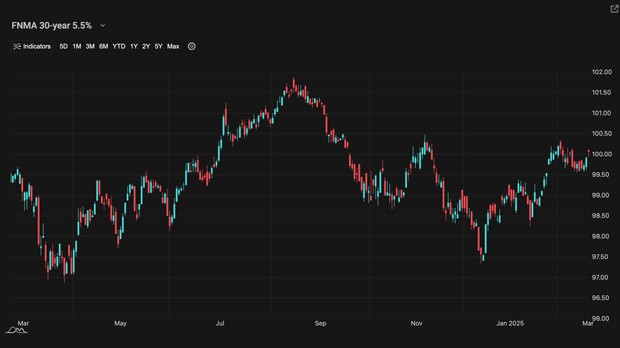
Economic Calendar for the Week of March 24 - 28
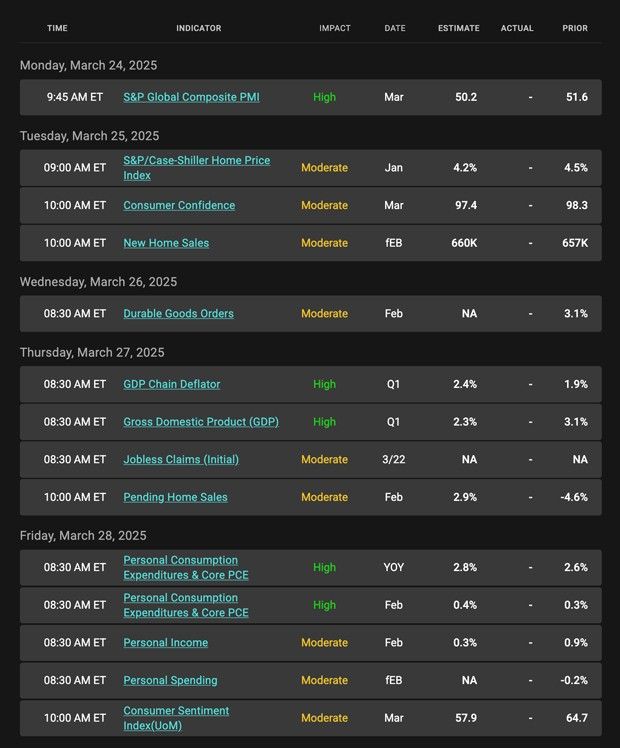
 |
|
Categories
Recent Posts
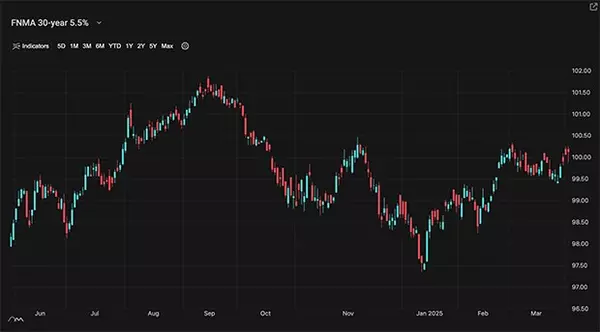
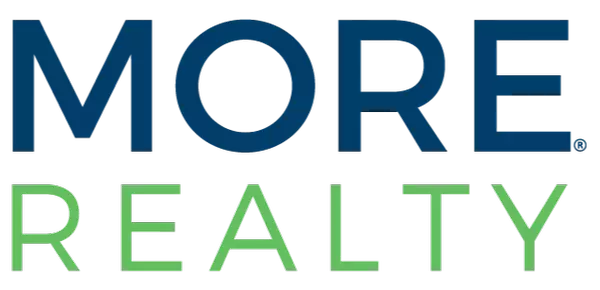
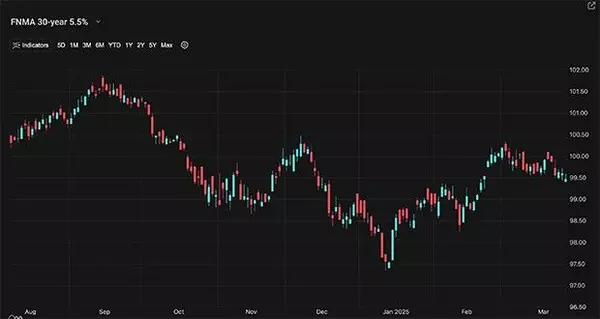

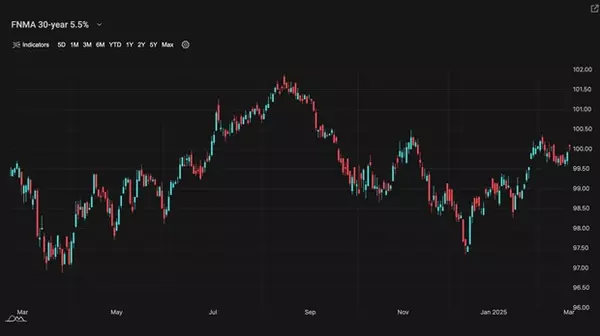

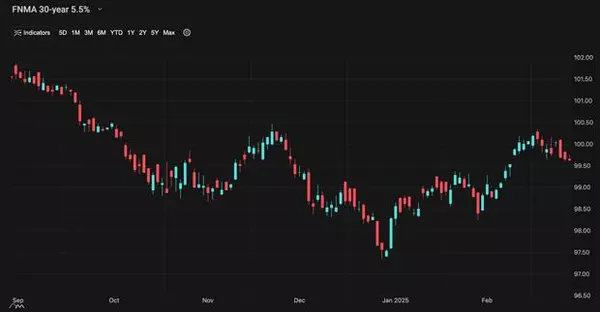

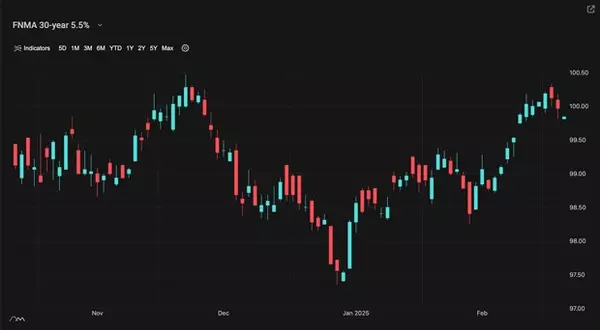

concierge@pennergroupproperties.com
16037 SW Upper Boones Ferry Rd Suite 150, Tigard, OR, 97224

